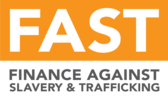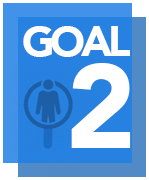Addressing the market failure that contributes to 49.6 million people in modern slavery and human trafficking requires improving market information and transparency, so that businesses connected to these risks face higher costs of capital, and those that prevent or address these risks face lower costs of capital. This requires action at both the enterprise and market level.
At the enterprise level, the first step is identifying and understanding connections to modern slavery and human trafficking risks. For many financial sector actors – with large numbers of business relationships, and with modern slavery and human trafficking risks often buried deep in long, complex and opaque supply-chains of their clients, investee companies or commercial partners – this may appear a daunting exercise. Specialized expert guidance may be needed.
In the meantime, the FAST Risk Mapping and Connection Diagnostic Tool can help orient financial entities grappling with these questions, helping them begin to understand where the salient risks are in their own operations and business relationships, and begin to think through questions of likelihood and prioritization. It may also prove useful to understand the type of connection (as defined by the UN Guiding Principles) that results – causation, contribution or linkage. Expectations of a business’ response depends on which type of connection is present.
The financial sector is on a learning curve in this arena. Progress up the learning curve will be more rapid if actors work together to learn how to make risk mapping and due diligence real, routine and effective. This may require developing specialized guidance for different financial sub-sectors, contexts and functions. Examples from Australia (around the adoption and implementation of the Modern Slavery Act 2018 (Cth), Brazil (a multistakeholder Pact to fight modern slavery) and the Netherlands (the Dutch International Responsible Business Conduct agreements) suggest that governments have an important role to play in fostering multi-stakeholder collaboration and learning.
Digital and data innovation may help foster the market information and transparency that is needed. There is a push in the sector to use novel, non-traditional data streams to inform social risk analytics. We may be on the cusp of effective predictive analytics for modern slavery and human trafficking risk. And new digital tools such as smart employment contracts and distributed ledger technologies for supply-chain provenance and chain of custody may also improve business’ ability to know and show the risks in their operations and business relationships. Digital tools may also complement and enhance engagement through survivor groups and trade unions. Deal parties and major financiers of specific high-risk sectors or projects could collaborate to harness anonymized worker and survivor voice platforms for enhanced, participatory due diligence.
Yet even if individual enterprises strengthen their ability to know and show their modern slavery and human trafficking risks, this may not generate effective pricing signals or otherwise influence market behaviour at scale. Evidence suggests that disclosure under existing supply-chain transparency regimes remains nascent. A lack of harmonization across those regimes makes it difficult for users – such as consumers and investors – to compare information, weakening market uptake and the overall impact of this information. Comparability will be highest, and systemic impacts greatest, when corporate ratings emerge that reliably link businesses’ actual conduct (and not just policies) to modern slavery and human trafficking risks, allowing this to influence capital allocation at the enterprise level.
Until then, however, it may be useful for governments and sector leaders to consider steps to harmonize disclosure frameworks. This could involve governments and international organizations pooling information on exclusions and ‘debarment’ of entities from procurement, investment and lending processes on the grounds of connections to modern slavery and human trafficking. This could adopt the approach to mutual enforcement of cross-debarment decisions that multilateral development banks already use to deal with fraud and corruption.
Another step would be to develop a shared taxonomy of risks and activities, as the EU has recently done in the broader sustainability space. The Task Force on Climate-Related Financial Disclosures, led by UN Special Envoy for Climate Action Michael Bloomberg, might also provide inspiration for developing modern-slavery related financial disclosures. In time, this may also allow the development of value-chain mapping and shadow pricing models that allow financial actors to compare individual firms to benchmarks, strengthening their ability to spot anomalous behaviours and associated modern slavery and human trafficking risks.


